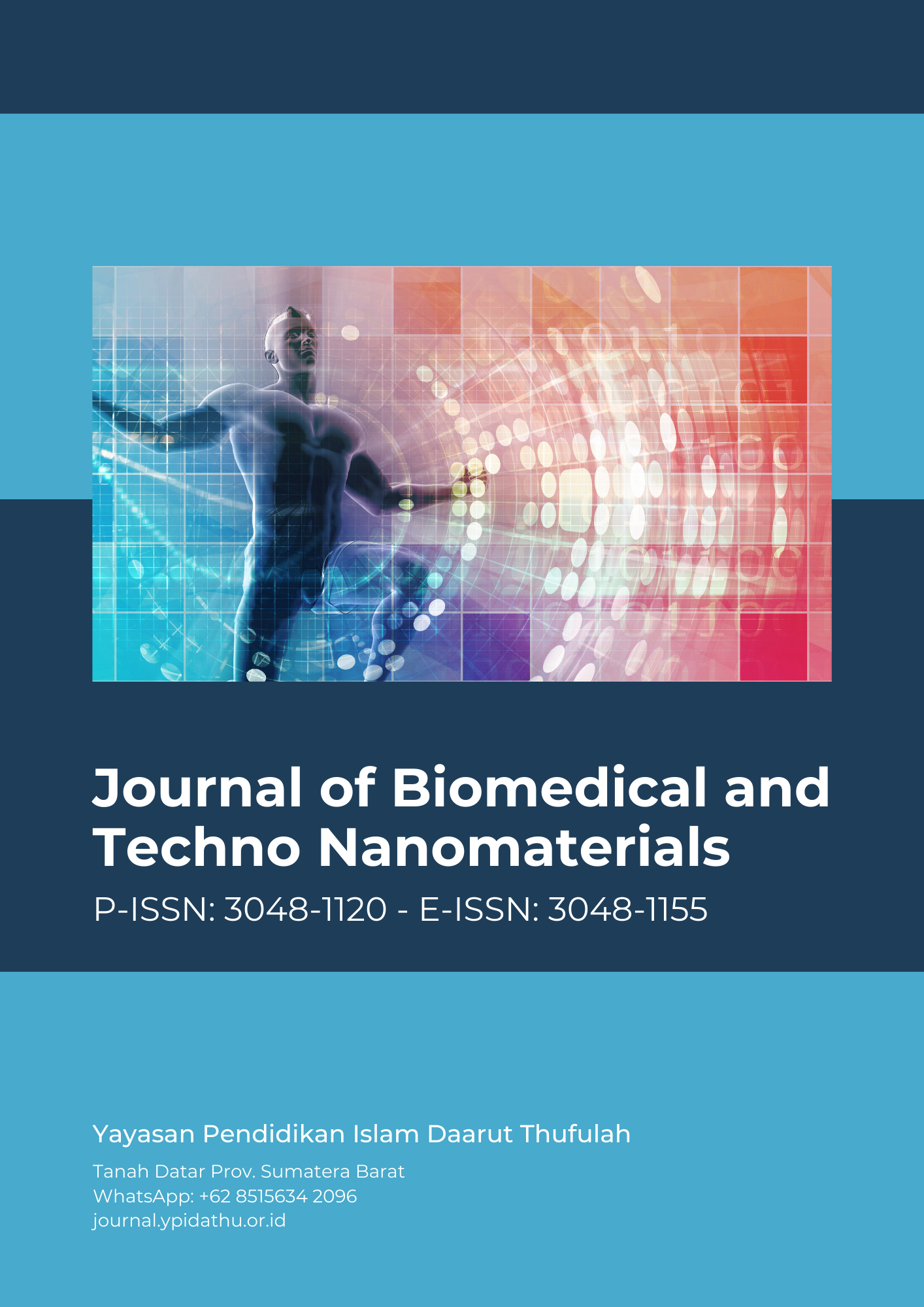Abstract
Chronic and degenerative diseases have posed global challenges in the healthcare domain. Protein engineering techniques have emerged as a promising approach for developing effective protein-based therapies to address various diseases. However, the application of these techniques can vary across countries, depending on available resources, research infrastructure, and regulatory policies. This research aims to evaluate and compare the implementation of protein engineering techniques for disease treatment across different countries. Specifically, it analyzes the factors influencing the adoption of these techniques and identifies best practices and challenges faced in each country. This cross-country study involves data collection from various sources, including literature reviews, surveys, and interviews with experts in protein engineering and drug development. The data is analyzed both qualitatively and quantitatively to assess the level of adoption of protein engineering techniques, success in therapy development, and factors influencing progress in each country. The findings reveal that the adoption and success of protein engineering techniques for disease treatment vary across countries. Countries with adequate research resources, strong infrastructure, and supportive regulatory policies tend to have higher levels of adoption and success. In contrast, countries with limited resources and stringent regulations face challenges in effectively implementing these techniques. This research highlights the importance of international collaboration, technology transfer, and regulatory harmonization in promoting the global adoption of protein engineering techniques for disease treatment. By identifying best practices and addressing existing challenges, the potential of protein engineering techniques can be more widely leveraged to develop more effective and affordable therapies for patients worldwide.
Full text article
References
Arrangoiz, R. (2016). Melanoma Review: Epidemiology, Risk Factors, Diagnosis and Staging. Journal of Cancer Treatment and Research, 4(1), 1. https://doi.org/10.11648/j.jctr.20160401.11
Chandra, R. (2020). Gambaran Klinis dan Patologi Melanoma Maligna Kutaneus. Cermin Dunia Kedokteran, 47(11), 673. https://doi.org/10.55175/cdk.v47i11.1193
Houghton, A. N., Coit, D. G., Daud, A., Dilawari, R. A., DiMaio, D., Gollob, J. A., Haas, N. B., Halpern, A., Johnson, T. M., Kashani-Sabet, M., Kraybill, W. G., Lange, J. R., Martini, M., Ross, M. I., Samlowski, W. E., Sener, S. F., Tanabe, K. K., Thompson, J. A., Trisal, V., … Walker, M. J. (2006). Melanoma: Clinical practice guidelines in oncologyTM. JNCCN Journal of the National Comprehensive Cancer Network, 4(7), 666–684. https://doi.org/10.6004/jnccn.2006.0057
Just a moment... (n.d.). Retrieved May 12, 2024, from https://www.thelancet.com/journals/lancet/article/piiS0140-6736(13)60802-8/fulltext
Kachroo, S., & Gowder, S. J. T. (2016). Gene therapy: An overview. Gene Technology, 5(1), 1–14.
Little, J. W. (2006). Melanoma: Etiology, treatment, and dental implications. General Dentistry, 54(1), 61–66; quiz, 67.
Lnterferon?? gene therapy for cancer: Basic research to clinical application—Yoshida—2004—Cancer Science—Wiley Online Library. (n.d.). Retrieved May 12, 2024, from https://onlinelibrary.wiley.com/doi/abs/10.1111/j.1349-7006.2004.tb02194.x
McCourt, C., Dolan, O., & Gormley, G. (2014). Malignant Melanoma: A Pictorial Review. The Ulster Medical Journal, 83(2), 103–110.
Wargasetia, T. L. (2005). Terapi Gen pada Penyakit Kanker. 4(2).
Widyastuti, D. A. (2017). TERAPI GEN: DARI BIOTEKNOLOGI UNTUK KESEHATAN. Al-Kauniyah: Jurnal Biologi, 10(1), 59–72. https://doi.org/10.15408/kauniyah.v10i1.4864
Yu, M. (1996a). Advances in Cancer Gene Therapy. McGill Journal of Medicine, 2(2), Article 2. https://doi.org/10.26443/mjm.v2i2.702
(Malignant Melanoma: Skin Cancer?Diagnosis, Prevention, and Treatment - Critical ReviewsTM in Eukaryotic Gene Expression, Volume 30, 2020, Issue 4 - Begell House Digital Library, n.d.)
Lerner, B. A., Stewart, L. A., Horowitz, D. P., & Carvajal, R. D. (2017). Mucosal Melanoma: new insights and therapeutic options for a unique and aggressive disease. Oncology (08909091), 31(11).
Eyquem, J., Mansilla-Soto, J., Giavridis, T., Van Der Stegen, S. J. C., Hamieh, M., Cunanan, K. M., Odak, A., Gönen, M., & Sadelain, M. (2017). Targeting a CAR to the TRAC locus with CRISPR/Cas9 enhances tumour rejection. Nature, 543(7643), 113–117. https://doi.org/10.1038/nature21405
Gloria, M. (2023, Juli 20). Customizing CAR-T cell-based applications using the CRISPR-Cas9 system | IDT. Integrated DNA Technologies. https://sg.idtdna.com/pages/education/decoded/article/customizing-car-t-cells-using-the-crispr-cas9-system
Parambi, D. G. T., Alharbi, K. S., Kumar, R., Harilal, S., Batiha, G. E.-S., Cruz-Martins, N., Magdy, O., Musa, A., Panda, D. S., & Mathew, B. (2022). Gene Therapy Approach with an Emphasis on Growth Factors: Theoretical and Clinical Outcomes in Neurodegenerative Diseases. Molecular Neurobiology, 59(1), 191–233. https://doi.org/10.1007/s12035-021-02555-y
Ramsden, D. A., & Nussenzweig, A. (2021). Mechanisms driving chromosomal translocations: Lost in time and space. Oncogene, 40(25), 4263–4270. https://doi.org/10.1038/s41388-021-01856-9
Rupp, L. J., Schumann, K., Roybal, K. T., Gate, R. E., Ye, C. J., Lim, W. A., & Marson, A. (2017). CRISPR/Cas9-mediated PD-1 disruption enhances anti-tumor efficacy of human chimeric antigen receptor T cells. Scientific Reports, 7(1), 737. https://doi.org/10.1038/s41598-017-00462-8
Wargasetia, T. L. (2005). Terapi Gen pada Penyakit Kanker. 4(2).
Zhang, F., Wen, Y., & Guo, X. (2014). CRISPR/Cas9 for genome editing: Progress, implications and challenges. Human Molecular Genetics, 23(R1), R40-46. https://doi.org/10.1093/hmg/ddu125
Authors
Copyright (c) 2024 Charles Eduardom, Joo Amanda

This work is licensed under a Creative Commons Attribution-ShareAlike 4.0 International License.

